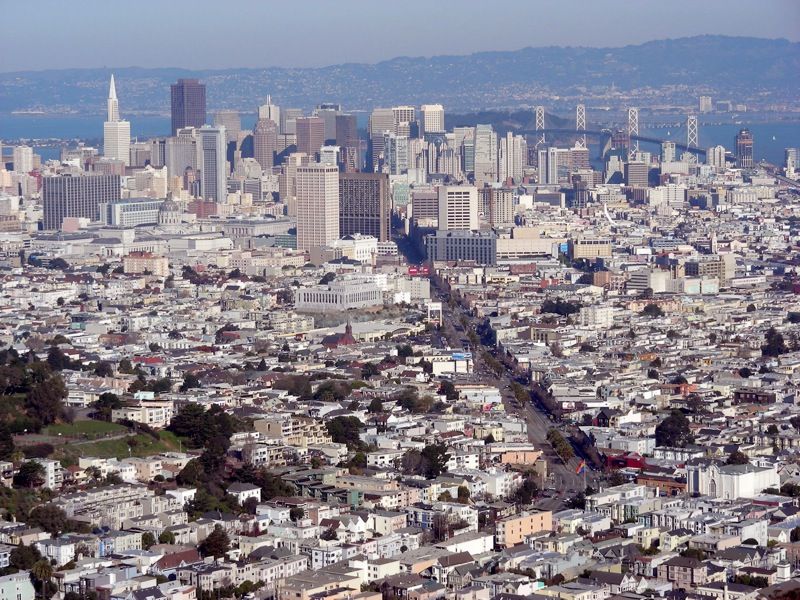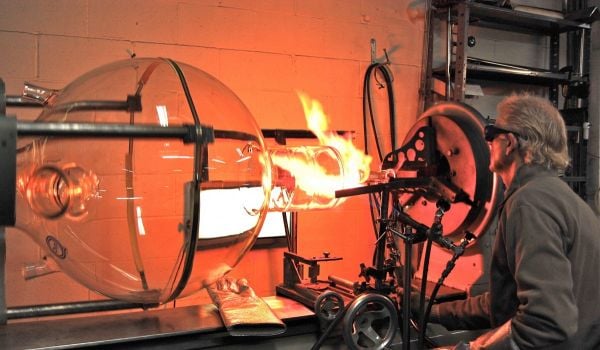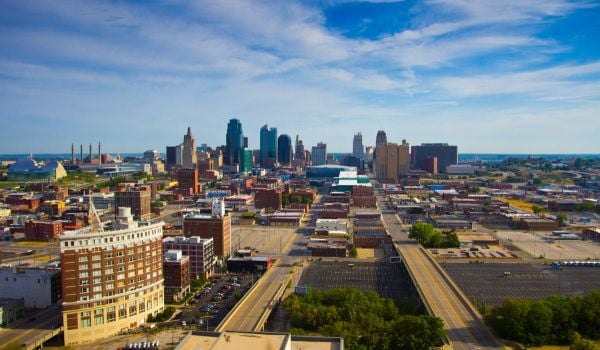Today, Next American City headed to the AIA’s San Francisco offices for a lecture entitled “Community Benefit Districts: The Future of San Francisco Development?”
Community Benefit Districts (CBDs) are San Francisco’s version of special assessment districts, a tool of localized governance designed to augment traditional city services. On Monday afternoon, Next American City hosted a panel presented by City Hall Fellows and the Craigslist Foundation that will explore what implications CBDs may have beyond streetscape improvement and beautification. Panelists included Lisa Pagan, Project Manager, Office of Economic and Workforce Development, City and County of San Francisco; Robert Stokes, Assist. Professor of Urban Environmental Studies, Drexel University; and Kate Sofis, Executive Director, Urban Innovation SF.
First off, here’s a pretty good explanation of what a CBD is from New City America:
In brief, the CBD is a local enabling ordinance that allows for the establishment of a new special benefit district. This “special benefit” district functions to create a stable revenue source to fund these special benefit services, that is established by a mail balloting of affected property owners culminating in the adoption of an ordinance by the Board of Supervisors.
Lisa Pagan, Project Manager, Office of Economic and Workforce Development, City and County of San Francisco, began by explaining her work, and the larger concept of CBD’s in general. Since the initiation of the CBD program in 2004, there are now 10 CBDs in San Francisco. A CBD is, essentially a public/private partnership requiring a special election as well as approval of board of supervisors and the mayor, and it is managed by non-profit comprised of stakeholders. Similar programs exist in hundreds of cities around the U.S. (New York has 64 such districts; Philadelphia has 10).
The benefits of forming these districts is that they improve business conditions, increase sales, improve quality of life, retain existing businesses and tenants and draw new ones. CBDs in San Francisco include Central Market, Noe Valley, Fillmore and Union Square, among many others. The Central Market district, for example, has a budget of about $535,000 a year and 141 properties. Pagan’s office provides technical assistance, a grant program, special election assistance and city contract management, among other services.
The idea is that CBDs provide services that will benefit the whole sector, and that together, businesses can achieve much more than individual business can in terms of marketing for the whole district and hosting special events that will draw new people to the area. This general holistic approach helps locals make change on a much bigger scale than their street; for example, a Castro CBD team wanted to solve the problem of business vacancies, so they mapped vacant storefronts, met with property owners, organized broker tours and finally established a business attraction campaign. Other results of the CBD model include art projects and innovative safety programs.
Robert Stokes http://www.drexel.edu/culturecomm/faculty/stokes.asp discussed the relationship between business improvement districts and crime. There are a number of theories about this relationship; business improvement districts are effective at preventing crime as more employment means less idle time for crime, social capital improves, and a healthy business district can contribute to the funding of public services that in turn improve neighborhood life. But in some neighborhoods, there are negative impacts of a BID: They might draw more offenders, as they offer more targets and things to steal. Certain business models like check cashing stores are considered predatory establishments; a business district that’s failing can cause localized stress on public service providers. The role of businesses in crime prevention include employment engagement, support of localized youth engagement, support of effective and just law practices, the promotion of locally owned businesses and the creation of lively civic spaces.
Stokes then pointed to some of his findings in three different studies he’s worked in. In Philadelphia, BIDs had a significant reduction in crime, user satisfaction and economic activity — but larger ones with larger budgets were much more effective in all these areas than small ones. An ongoing CDC-funded study about whether BIDs have any impact on youth violence in Los Angeles has shown that in the three BIDs studies crime had indeed gone down: Robbery rates dropped 12 percent, and violent crime dropped by 8 percent.
Kate Sofis, who is active in trying to form San Francisco’s newest CBD — PACE, or the production, artisanal and creative enterprises CBD — spoke about the project, which is already a unique venture in that is is not named after the neighborhoods it includes, which are the Northeast Mission, Showplace Square and the Central Waterfront/Dogpatch area. They found that with stakeholders, what resonated most was the type of businesses and activities. The Eastern neighborhoods of San Francisco are home to 7 million many multi-story, formerly industrial buildings that are affordable space for businesses that might need less expensive, non-traditional working space. At the moment, the areas are home mostly to media, designers and creative professionals — and there’s been a recent surge in artisanal food production. Sofis explained that her group’s plan is both a place-based and an industry strategy, with the ultimate goal of contributing to the overall economic health and livability of mixed-use neighborhoods.
The challenges the area faces include business exits, job loss, vacant properties, graffiti and crime — much of these stemming in turn from a general sense of confusion about new zoning requirements and a lack of collaboration among business owners. CBD status could lead to more of this collaboration among business owners, property owners and residents. Sofis’s organization is creating a template that lays what’s possible, and will assist the eventual CBD (they’re hoping for a summer vote) by acting as a provider of marketing and branding, commercial space finder, small business concierge and economic advocate.
















